What Are The 4C's of Onboarding and How to Implement Them (Plus A New Hire Checklist Template)

Let Us Help You Engage Your Employees!
Onboard New Hires Safely, Efficiently, and Effectively.
Are You Interested in Improving Your HR Organization?
As an HR professional, you're well-acquainted with the practice of onboarding. But if your company has never made doing it well a priority, you may not have a full understanding of its benefits.
We'll attempt to remedy that in this blog. We'll explain why proper onboarding of new employees is so important, and how to do it effectively using the four C's approach. Let's jump in!
The Importance of Onboarding
First off, why do proper onboarding best practices even matter? There are many different reasons. We'll cover a few of the most prominent ones now:

Are you considering going paperless and thinking of speeding up your onboarding process? Learn how we can help.
Learn More about Onboard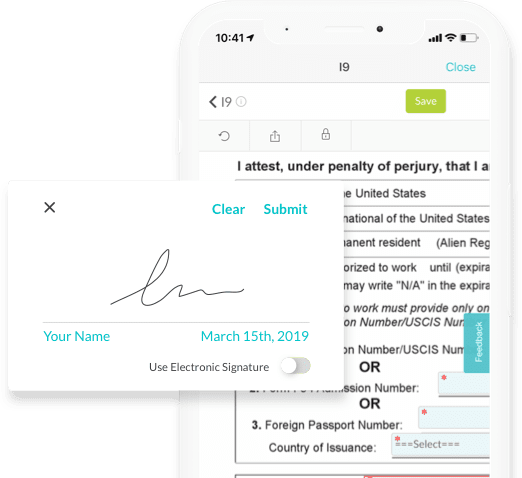
First Impressions
Do you remember the old saying, "You never get a second chance at a first impression"? Well, it definitely rings true in the business world. Especially when new employees are first being introduced to the inner workings of a business.
If your onboarding process is chaotic and outdated, new hires will assume the company isn't well-managed. They may even begin to doubt their decision to take the job. Certainly not the feeling you want new team members to have on their first day!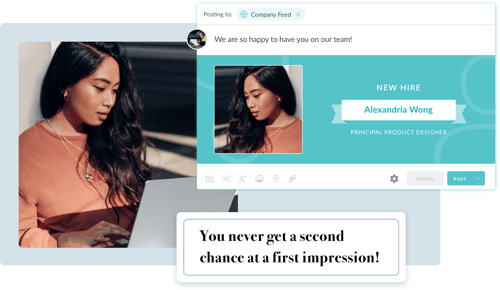
Employee Engagement
Successful employees — the kind that work hard, help move a company forward, and make the HR department that hired them look good — are engaged employees. There's no way around it. If your company's employees aren't engaged in their work, they'll produce lackluster results.
In fact, studies show that companies that implement a structured onboarding approach produce 50% more productive employees!
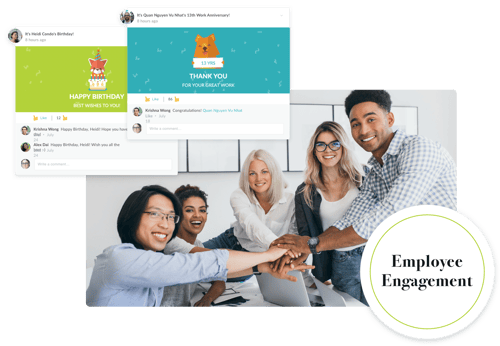
Engagement also increases employee retention, which directly impacts the financials of the company. Let's talk more about that:
Financial Responsibility
Successful onboarding directly affects a company's bottom line. As we've already mentioned; the process can elevate an organization in the mind of new hires, increase their engagement level and make them more productive. Each of these leads to more profit.
Onboarding online tool can also entice workers to stay with a company longer — an important fact considering the high cost of employee turnover. Think about it, if your employees think highly of your company and are engaged in their work, they won't have much incentive to leave.

The Four C's of Onboarding
Can we agree on the importance of onboarding best practices? Great, now let's dive into the four C's approach. Use these techniques to improve your company's onboarding process.

Compliance
Most companies, regardless of their stance on onboarding, cover compliance when a new team member is hired. After all, it's the law. Compliance measures typically include an outline of company policies, confidentiality requirements, safety regulations, and more.
These measures need to be taken, but they're also just the tip of the iceberg. The first level, so to speak. Let's move on to the second C.

Are you considering going paperless and thinking of speeding up your onboarding process? Learn how we can help.
Learn More about Onboard
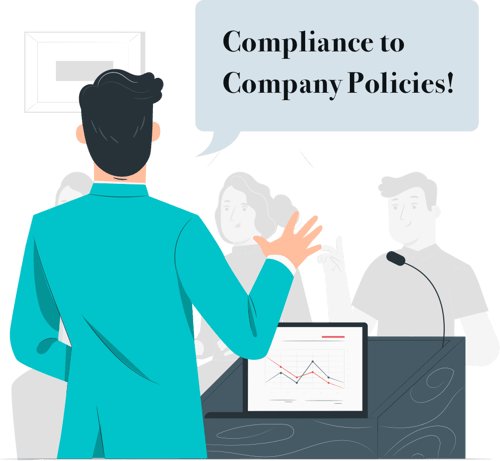
Clarification
Unfortunately, for many companies, the onboarding process begins to break down at this step. As an HR rep, you need to ensure that each of your new hires clearly understands their role in the company and what's expected of them. They need clarification.
Questions to answer may range from high-level queries such as what the company's overall objective is and whom new hires should report to; to the ground-level details like where to park. It's all vital to a smooth and successful onboarding experience.
Culture
Company culture is often taken for granted. Or mistaken for perks like catered lunches or unlimited time-off policies. True culture goes deeper and encompasses an organization's mission, values, the vision of the future, the way team members interact.
HR departments should make culture a priority during the onboarding process and steep new hires in it from the very, very beginning. This includes the original employment ads and initial interviews; and runs through the employee's entire first few months at your company.

Connection
For business success to be achieved, connections amongst employees must be made. Your staff is more than random people performing specific functions. They're teammates working together to accomplish ambitious goals. At least they should be.
Foster connection by introducing new hires to their new colleagues. If there are subgroups within your company you believe align with their personality — a band of people who meet on Saturdays to perform community service, for example — arrange for an introduction to be made.
If your organization has the ability, you may even want to assign a mentor to new hires, who can show them the ropes during their first couple of months on the job.
Whatever you do, foster connection and communication between new employees and the rest of your company. Your company will be better for it.

Are you considering going paperless and thinking of speeding up your onboarding process? Learn how we can help.
Learn More about Onboard

Put the Four C's Into Action
In this blog, we covered the importance of onboarding best practices and the four C's approach to doing it effectively. We hope this information has been useful!
If you can implement a system that ingrains compliance, clarification, culture, and connection into each of your new hires — and commit to it — your company will see a lot more success. It's almost inevitable. But it's not necessarily easy…
That's why we've created tools to help. Our onboarding software, in particular, will help you incorporate the four C's into your process and create more engaged, productive employees for your organization. If you have not yet tried an employee onboarding software, now is the time!

Are you considering going paperless and thinking of speeding up your onboarding process? Learn how we can help.
Learn More about Onboard

Launching a Successful Onboarding Initiative
The benefits of initiating an onboarding program, as discussed in our first paper on this topic, include increased retention, productivity, and job satisfaction. In order to achieve these benefits, a successful onboarding initiative will have key components, including explaining rules and regulations, defining expectations, presenting cultural norms, and developing relationships. In each of these areas, a human resource management system (HRMS) with onboarding technology can enhance the process.
Technology provides an increasingly important level of support that will help an onboarding program meet its goals. The components of an effective technology underpinning are:
Task Management: Those capabilities helping to perform the administrative tasks usually using a built in series of protocols, which are step-by-step instructions with feedback.
Workflows: Those capabilities providing communications, outreach, alerts, notifications, and process steps between the newly hired employee and the rest of the company (at all levels across many departments). Oftentimes, the status of each of the workflow steps is presented in a “dashboard” view. The workflow capabilities typically include employee self-service and manager self-service notifications.
In either component, a workflow of step-by-step instructions and screen progressions pertinent to the task is important. This is especially recognized and intended to mirror the strong degree of comfort that Gen X, Gen Y and Millennials have with any online interaction.

Are you considering going paperless and thinking of speeding up your onboarding process? Learn how we can help.
Learn More about Onboard
Onboarding Must-Haves
Rules and Regulations Explained
Successful onboarding will explain the basic set of requirements, policies, and procedures a new hire will need to follow. Doing so will ensure that the new employee is abiding by legal requirements needed to succeed in the role they are assuming.
An HRMS streamlines the process of explaining the appropriate rules and regulations. For example, Onboard from HR Cloud, keeps track of I-9 and W4 forms online, complete with valid signatures. New hires can complete an onboarding checklist before their start date, allowing employees to participate in what is known as preboarding.
Ideally, this keeps them engaged, excited and eager to begin, and of course, gives them the feeling of being a productive member of the “team” even before they start their employment on day one. For college hires this might prove valuable as there is usually a lag time of a few months from graduation to start date.
With an HRMS, it’s also possible to create a portal within the company’s own website where employees can go to complete all of their administrative tasks, learn about the corporate culture, take new hire training, and find out anything else that will help them be more productive. In this manner the newly hired staff member HRCLOUD.COM takes an active role as opposed to a passive one, and takes ownership for accomplishing the required administrative tasks.
Onboarding software keeps track of I-9 and W4 forms online, complete with valid signatures.
Expectations Defined
Onboarding does more than explain rules and regulations, it also clarifies the new-hire’s role within the organization. During onboarding, role clarity is a consistent predictor of job satisfaction and organizational commitment. The better an employee understands his or her role, the more likely they will be to meet expectations. In fact, if a new-hire’s role is unclear, the organization is likely to lose money due to employees that don’t understand their roles, become disenchanted, and could likely leave in a short timeframe.
-
An HRMS can aid in the onboarding process by setting expectations for employees. HRMS technology creates specific onboarding workflows that are triggered upon input and receipt of the initializing event, such as acceptance of the “offer letter” and agreement of the first day of employment. These can include:
-
An e-mail message to be sent to a new employee with a “welcome letter” and instructions for using the onboarding components of the HR system.
-
An e-mail message to be sent to other internal departments, especially internal IT, informing them of the new hire’s start date and other pertinent information needed to establish security IDs, passwords and access to specific systems, and to initiate the preparation of any devices such as laptop and phones, as needed.
-
An e-mail to the employee with a link to a “new employee portal” which walks the new hire thru a step-by-step process of downloading and uploading a wide variety of employment information, prepares them for their first day, and streamlines their socialization to the new organization.
-
At the same time that the above activities are taking place, the hiring manager can go online to select the tools and office space the new staff member will need. Those requests, in the form of a triggered email, with content preloaded, are sent to the information technology and facilities departments, among others, so they are ready for the employee on their first day.
-
An effective onboarding program must seamlessly incorporate the supportive protocols mentioned above into what the newly hired staff member “experiences” in each and every contact with the organization.
Cultural Norms Presented
Besides explaining rules and regulations and defining expectations, onboarding, if implemented correctly, will convey the “culture” of an organization. When corporate cultural norms are conveyed correctly, new employees gain an understanding of the organization’s goals and values and hopefully begin to embrace and understand the company’s ethical and political landscape.
Supporting your onboarding initiative with Onboard from HR Cloud, allows you to communicate your organization’s mission and values while the new hire goes through the onboarding process.
The most effective onboarding initiatives are within those organizations that are using the Internet to facilitate the experience and provide the new employee with corporate history, the values of the firm, and an overview of the strategy and fiscal goals.
Another important component is the use of videos that can, for example, provide a “welcome” message from the most appropriate senior executive (hopefully the president or CEO) or can provide an overview of the company’s performance (possibly by the CFO).
All of these tools and activities are intended to build an initial and strong foundation for engaging the new employee and hopefully instilling positive momentum, excitement, eagerness and a feeling of being an important part of the organization. These “emotions” must be reinforced by an effective program that extends over a period of time. Research shows that the most effective and considered “best practice” onboarding programs should extend over several months and not end right after any formal orientation.

Are you considering going paperless and thinking of speeding up your onboarding process? Learn how we can help.
Learn More about Onboard
Relationships Are Developed
The last component of successful onboarding implementation is developing relationships in order to help employees become better integrated into the company. In order to achieve integration, some onboarding programs include rotational assignments; others may include special projects that are designed to expose the new employee to parts of the company they would not normally have any contact with. There is good reason to incorporate these types of activities during a period of months after the start date as this would expose the newly hired staff member to other corporate practices, locations, culture, and colleagues.
Another critical component in the relationship development process is the need to include the direct hiring manager. Research shows that the relationship with the manager is one of the most significant in an employee’s work life and directly influences the engagement and eventual longevity of the employee. 2 Most employee turnover is ultimately caused by that relationship (or lack of), which makes the ability to assimilate new employees a core competence of managers. An employee’s direct manager typically controls all career progression, educational opportunities, and the assignment of projects.
So a manager who takes time to discuss goals and expectations and in effect serves as a “mentor” who shows concern over that person’s “socialization” and who knows what the employee can do and wants to do, will make wiser decisions and build loyalty over time.
Using onboarding technology from HR Cloud can enhance relationship development by building a new hire social network and engaging the new hire in the company’s social network. If you are hiring a significant number of young employees, an online new-hire community can help them feel more at home.6 These corporate social networks can be used for work tasks, allowing employees to help each other get acclimated, and provide for socialization.
Quantifying Onboarding ROI
As we know from many sources, among them the 2017 State of the American Workplace report by Gallup, which surveyed over 195,000 employees. “51 percent of U.S. employees say they are actively looking for a new job or watching for openings.”
Undoubtedly, no one would argue that this indicates a loss of engagement and can only be remedied by ensuring that newly hired staff members are highly engaged from the start, even beginning with the first moment they have contact with an organization.
The majority of company leaders would agree that employee engagement is important to success, but they may not realize the direct financial impact high engagement can have.
According to research, “Companies with employee engagement programs achieve 26% greater year-over-year increase in annual company revenue, compared to those who do not have formal programs.”
Regarding engagement with employees specifically by their leaders, “managers who are not engaged or who are actively disengaged cost the U.S. economy $319 billion to $398 billion annually.”
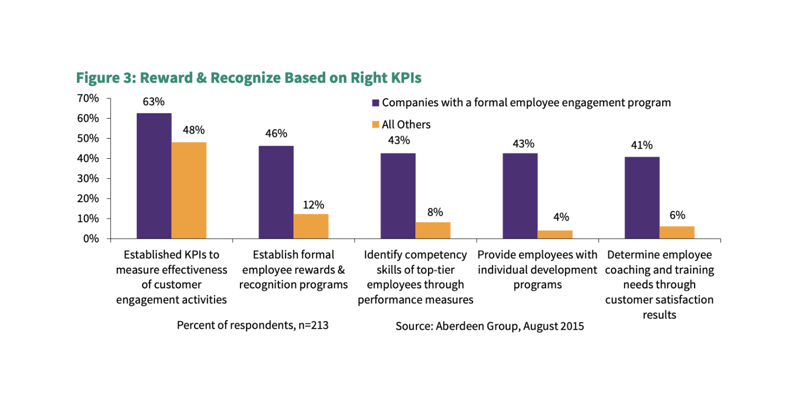
With numbers like these, it’s no wonder that organizations are eager to adopt onboarding techniques and engagement programs that will not only improve employee retention, but also improve their net revenue. The question of which techniques work best subsequently becomes incredibly important, and various research reports have pursued the answer.
Aberdeen determined the following as “best-in-class” onboarding components:
-
Forms management: collecting, tracking and managing of all internal and external new hire forms.
-
Task management: ensuring all tasks are tracked and completed.
-
Socialization: engaging new hires into the company culture and providing individual guidance to create an overall positive experience.
The most important findings in Aberdeen’s research pertinent to determining the ROI of onboarding is this:

Results that add up where it matters most: your bottom line. Calculate your possible ROI now!
Calculate Now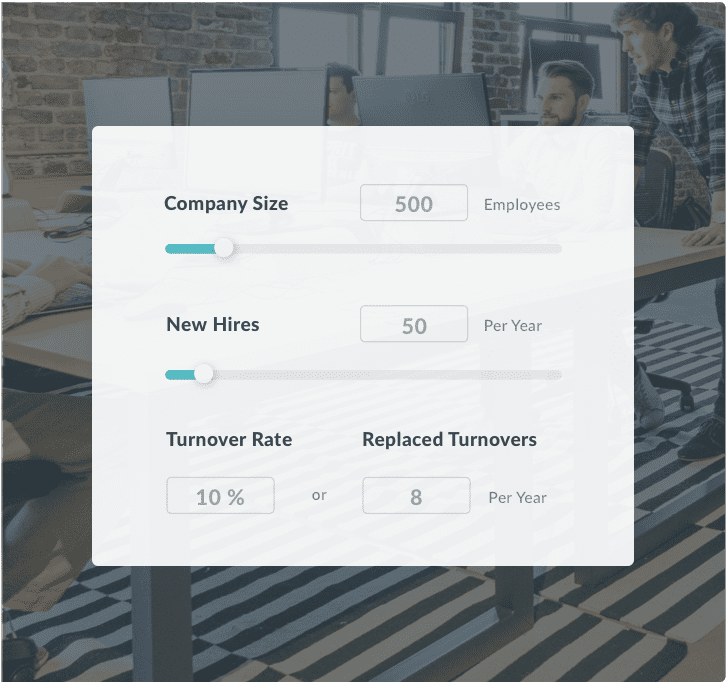
In comparing best-in-class to all other companies (“industry norm” and “laggards”), the best-in-class companies who indicated they performed a reasonable mix of both strategic initiatives to engage new hires and tactical components that will ensure they can get up to speed on day one, improved their revenue growth to a significantly greater extent than those who did not.
Aberdeen found that organizations that execute on these tactical and strategic activities are able to achieve business results such as customer retention and revenue per employee. Best-in-class organizations improved customer retention by 16% and revenue per full time employees by 17%. By implementing a program to create efficiencies and also engage new hires, best-in-class organizations also improve the business.
None of this will be effective without appropriate technology, front and center. Although onboarding isn’t all about the technology, it is a critical factor in creating a best-in-class initiative that will provide the end result of improved company performance. That alone makes onboarding programs a needed and strategic capability in itself and also a justifiable target for strong technology support.
This white paper covered how to launch a successful onboarding initiative, including incorporating technology and measuring ROI. For additional information about how technology improves HR processes, download HR Cloud’s white paper, “10 Ways the Cloud Improves HR Processes.” The paper includes information about how cloud-based technology benefits HR in the areas of value, finance, and risk-mitigation.
For further insight into what makes an effective onboarding process, read on to view our New Hire Checklist.
New Hire Checklist Template
Here is the beginning of a sample New Hire Checklist for employers. The task owner is listed in bold font and underlined. This is the person/function/team responsible for the agenda item on the onboarding checklist.
Pre-Boarding 2-4 Weeks Before (or Starting from Offer Signature):
Recruiting
-
Announce Hire to Team via “Win Email” — include new hires email address so employee’s can send congratulatory emails to the new hire
-
If applicable, run background check
HR
-
Send onboarding welcome email to new hire — make sure this is within 24 hours! You want to capitalize on their excitement from the recency of signing the offer
-
Add new hire start date to calendar and add relevant teams
-
Onboard new hire to HRIS system
Manager
-
Complete Hiring Manager Form — assign onboarding buddy, assign desk, assign email groups/tools provision preferences
IT
-
Order technical equipment — laptop, mouse, keyboard, monitor, etc.
-
Provision new hire — email creation, group and access provisioning, key fob creation, etc.

Are you considering going paperless and thinking of speeding up your onboarding process? Learn how we can help.
Learn More about Onboard
Pre-Boarding 2-4 Weeks Before (cont.):
Manager & HR
-
Invite new hire to a team or event preceding the start date — if there is a significant amount of time between a new hire signing an offer and starting at the company, see if you can find an event for the new hire to come out and get to know the team or company in a social setting.
Pre-Boarding 1 Week Before:
Facilities
-
Clean desk area
Manager
-
Begin “Road to Success” Form — outline goals and expectations desired
-
Add new hire to any important reoccurring team meetings
-
Setup 1:1 meetings between the new hire and any instrumental colleagues that the new hire will be closely working with
-
Organize welcome lunch for new hire at local restaurant — include team members, important cross-departmental connections, or cultural champions
-
Assign Dept/Team-specific trainings for new hire
HR
-
Assign company-wide trainings for new hire
-
Assign buddy to new hire and communicate responsibilities to buddy
-
Confirm “Week 1” schedule for new hire — to be presented to new hire on Day 1
Pre-Boarding 1 Week Before (cont.):
HR
-
Send First Day Details to new hire (when to arrive, who to contact, office address, etc.)
First Day
Facilities
-
Early in the morning, set up new hire swag on desk — let your company branding shine through!
IT
-
Place new hire laptop and tech setup on desk — include instructions in a one-pager with information on things like WiFi passwords, gaining access to work email, etc.
Buddy & New Hire
-
Coffee meeting — new hire and buddy grab a welcome coffee and do an office tour (Your new hire will thank you when you teach them how the coffee machine works!)
IT & New Hire
-
Meeting — Laptop setup and equipment troubleshooting.
Manager & New Hire
-
New hire and manager morning meet & greet — manager presents Week 1 schedule to new hire
HR & New Hire — Live (or Virtual) New Hire Orientation
Tactical
-
Technical Access: Confirm new hire can access all company-wide tools (HRIS, company intranet, etc.)
-
Complete Forms: New hire completes Part 1 of I-9, W-4, direct deposit information, confidentiality agreeement, employee handbook acknowledgement, benefit elections and 401k election
-
Present employee with their new employee checklist
Cultural
-
Culture Overview: Core values, mission/vision, company goals
-
Overview onboarding contacts available to the new hire and network map of helpful persons during their first month
Job Knowledge
-
Review importance of the Road to Success Form
Manager & New Hire & Team
-
Welcome Lunch — new hire and pre-selected group celebrate at lunch
Facilities & New Hire
-
Take photo of new hire for identification card & goofy company photo wall
-
Walk new hire to commuter lot to register for parking
Manager & New Hire
-
Meeting — End-of-day catch-up with new hire

Are you considering going paperless and thinking of speeding up your onboarding process? Learn how we can help.
Learn More about Onboard
First Week:
New Hire
-
Sign & acknowledge company handbook
-
Complete compliance training (anti-harassment training, etc.)
-
Review all company policies
-
Send new hire introduction email to company
Manager & New Hire
-
New Hire “Road to Success” Meeting with manager — review Road to Success Form including 30/60/90/180 goals, expectations, and onboarding resources
-
End-of-day catch-up meeting with new hire on Wednesday/Friday EOD
Buddy & New Hire
-
Coffee meeting — casual coffee with new hire
HR & New Hire
-
End-of-week check-in meeting with new hire
First Month:
Manager & New Hire
-
30 Day Check-In — reflection, evaluation, realignment
-
Continue having reoccurring 1:1 meetings to discuss performance
New Hire
-
All company-wide trainings complete
All New Hires
-
Lunch Meeting — casual lunch with all new hires only (this gives them time to bond since they are likely going through similar onboarding experience
Manager
-
Lunch Meeting — casual lunch with new hire
First 3 Months:
Manager & New Hire
-
90 Day Check-In — reflection, evaluation, realignment
-
Continue having reoccurring 1:1 meetings to discuss performance
New Hire
-
All department and team-specific trainings complete
Company
-
Quarterly New Hire Welcome Happy Hour
HR
-
Send Onboarding Survey to new hire
-
Overview of the performance management process with new hire
First 6 Months:
Manager & New Hire
-
180 Day Check-In — reflection, evaluation, realignment
-
Continue having reoccurring 1:1 meetings to discuss performance
-
Discuss possible growth or professional development opportunities for the new hire

Are you considering going paperless and thinking of speeding up your onboarding process? Learn how we can help.
Learn More about Onboard
First Year:
Manager & New Hire
-
Annual “Year in Review” — annual evaluation of the first year’s performance and growth
HR
-
Celebrate new hire’s work anniversary!
HR Cloud helps you enchant every employee by helping to foster social connections and company culture while saving companies time and money. We make it easy to stay compliant and automate HR responsibilities so that our customers can focus on building their companies.
Create a custom, fully digital onboarding process with built-in automation using HR Cloud’s onboard application.
Author: This article is written by a marketing team member at HR Cloud. HR Cloud is a leading provider of proven HR solutions, including recruiting, onboarding, employee communications & engagement, and rewards & recognition. Our user-friendly software increases employee productivity, delivers time and cost savings, and minimizes compliance risk.
Keep Reading
Workforce Management through Tech-Based Tools: Streamlining Construction and Roofing Operations
As industries evolve, adopting innovative approaches to workforce management is essential
Skills vs Abilities in the Workplace
Modern-day workplaces are facing many challenges that were not foreseeable a few years





